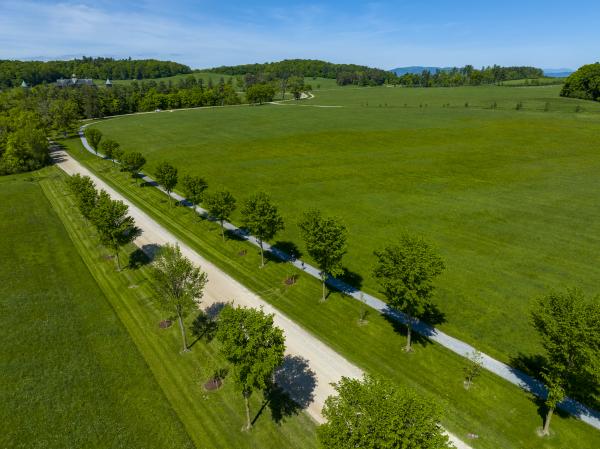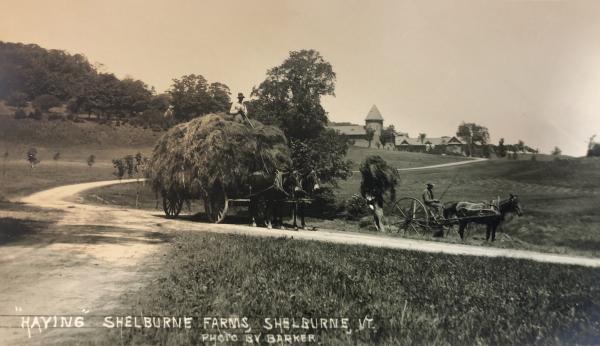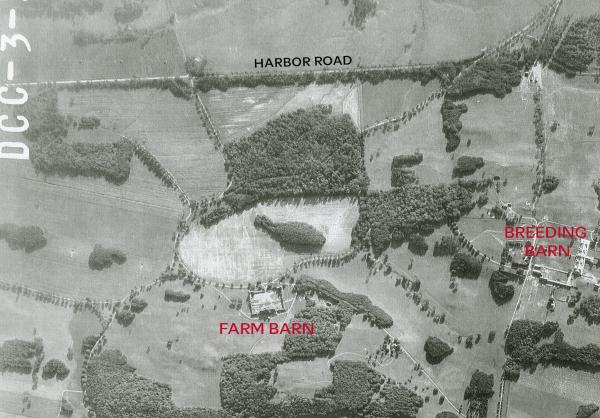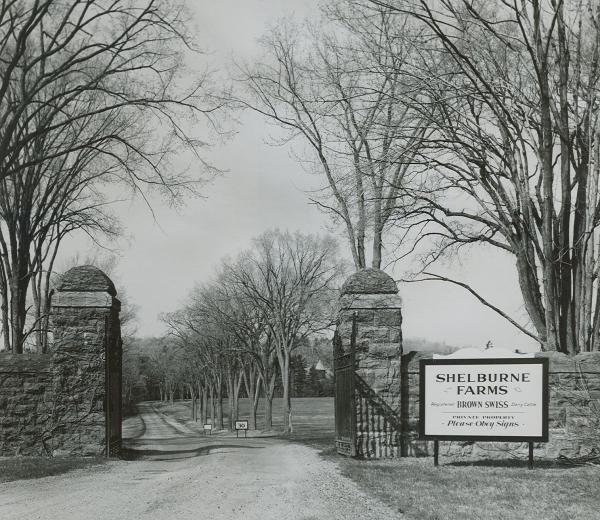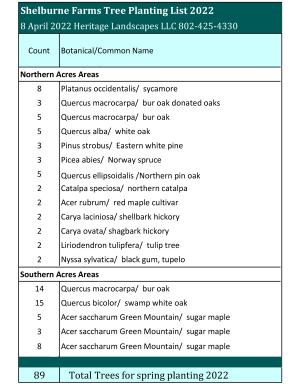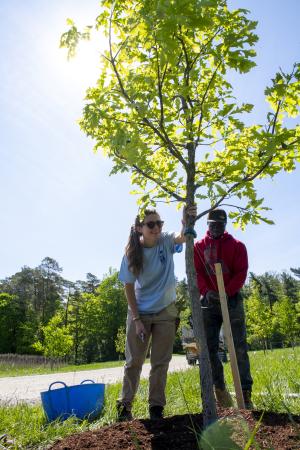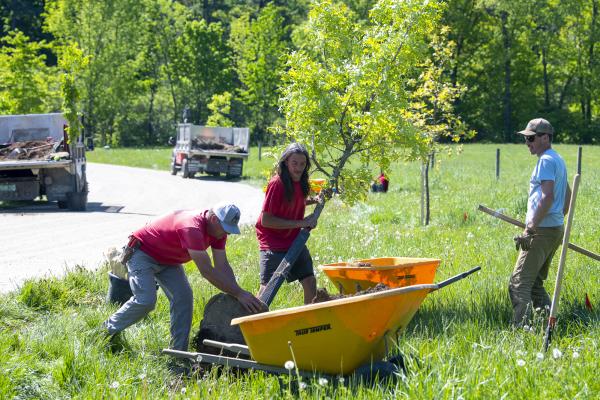New trees help renew an earlier landscape
According to Shelburne Farms’ archival photographs and records dating back to the late 19th century, stretches of farm roads were once lined with trees, especially the stately elm. Many of the trees formed dramatic allées: their leaf canopies dappled the road with sunshine and shadows. Sadly, nearly all the elm trees were lost to Dutch Elm disease in the 1970s. Additional trees were lost to farm operations, or simply, as in the case of Poplar Drive, to the march of time.
Restoration of some of these allées began more than a decade ago, when we planted Princeton Elms along the main drive (and also around the Inn). In 2019, we replanted the allée along Poplar Drive. This season, the tree planting work got a big boost thanks to a special gift from a donor with deep ties to Vermont.
Horsford Gardens and Nursery, located in the neighboring town of Charlotte, provided the trees for this planting, in a business relationship that dates back 135 years! In March 1887, in a letter now at the Library of Congress, Dr. Webb, founder of the agricultural estate, wrote to Frederick Law Olmsted, Sr., “....I would be very much pleased to have you give Pringle & Horsford an order for the above plants and stock at the price you suggest. Mr. Taylor will see that they are taken good care of on their arrival.” The earliest surviving Horsford receipt held in the Shelburne Farms Archives dates to 1902.
But in the era of climate change, nurturing trees successfully after planting has become trickier, even as it’s become more essential. Trees are now subject to more diseases, fiercer weather events, and warmer temperatures. The Princeton Elms, for example, bred for their resistance to Dutch Elm disease, have instead been succumbing to that blight. To plan as much as we can for resilience, we planted native heat tolerant species like hickory and tulip trees, sycamores, and bur oaks, in addition to signature sugar maples, white pines, and oaks.
Since 2004, all landscape restoration work has been guided by our Shelburne Farms Landscape Stewardship Plan, developed by Heritage Landscapes to help us care for this National Historic Landmark. As the plan states, we seek to "investigate the past to inspire the future." Planting trees that both honor the past and embrace an uncertain future does just that, with nature leading the way.
Enjoy a photo tour of the trees through the years.
You can just see newly planted allée trees to the left of the hay wagon in this circa 1893 postcard. One focus of this year's work was to plant young oaks to restore this allée that runs from the Farm Barn down to the pond. (photo: Shelburne Farms Archives) In this aerial photo from the 1940s, you can see nearly every road on the farm lined with trees. (photo: Shelburne Farms Archives) The main drive circa 1955. The elms are already showing signs of decline. (photo: Noonan Photography / Shelburne Farms Archives) Heritage Landscapes developed the tree list for this season’s plantings based on native species that would likely do well in a warming climate. A team from Horsford Nursery and Distinctive Landscaping in Charlotte, VT did the lion’s share of the tree planting work. (photo: Caleb Kenna) Horsfords relationship to the farm dates back 135 years. The nursery was founded in 1883 and the Webbs first purchased plant stock there in 1887. (photo: Caleb Kenna) Some of the Princeton elms that we planted along the Main Drive have already succumbed to Dutch Elm disease and more will likely follow. (Although bred to be resistant to the disease, Princeton Elms are not immune to it.) We are now planting sycamores in between the elms, planning for a time when the sycamores alone will form the majestic canopy over the road. (photo: Caleb Kenna)
